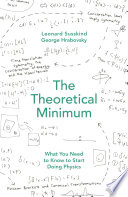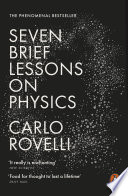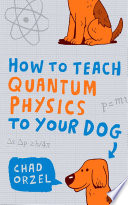Discover our expert guide to learn about quantum physics, quantum mechanics, and quantum theory from the best books for quantum physics.
The word ‘quantum physics’ alone can be daunting. Even though we know physics is the key to understanding our universe, studying areas like particle physics, quantum entanglement, and relativity can be a struggle. At the core of this field of study is an attempt to explain why matter and energy behave the way they do.
For more recommendations, you might also enjoy exploring best adventure books, best David Sedaris books, or authors like Bill Bryson.
Table of Contents
Open Table of Contents
- Popular Quantum Physics Books
- 1. Something Deeply Hidden: Quantum Worlds and the Emergence of Spacetime by Sean Carroll
- 2. Quantum Mechanics: The Theoretical Minimum by Art Friedman and Leonard Susskind
- 3. Physics Without Prior Knowledge: Become an Einstein in 7 Days by Benjamin Spahic
- 4. Seven Brief Lessons on Physics by Carlo Rovelli
- 5. How to Teach Quantum Physics to Your Dog by Chad Orzel
- 6. Introduction to Quantum Mechanics by David J. Griffiths and Darrell F. Schroeter
- 7. Revolutions in Twentieth-Century Physics by David J. Griffiths
- 8. Quantum Theory (Great Works that Shape Our World) by Niels Bohr and Max Planck
- 9. The Age of Entanglement: When Quantum Physics Was Reborn by Louisa Gilder
- 10. The Feynman Lectures on Physics, boxed set: The New Millennium Edition by Richard P. Feynman
- 11. The Physical Principles of the Quantum Theory by Werner Heisenberg
- 12. Eight Lectures on Theoretical Physics by Max Planck
- 13. Quantum Information Theory by Mark M. Wilde
- 14. The Principles of Quantum Mechanics by P. A. M. Dirac
- 15. QED and the Men Who Made It: Dyson, Feynman, Schwinger, and Tomonaga by Silvan Schweber
- 16. Quantum Physics for Beginners: From Wave Theory to Quantum Computing by Carl J. Pratt
- 17. QED: The Strange Theory of Light and Matter by Richard P. Feynman
- 18. Relativity: The Special and General Theory by Albert Einstein
- 19. What Is Real? The Unfinished Quest for the Meaning of Quantum Physics by Adam Becker
- Best Books for Quantum Physics: The Final Word
Popular Quantum Physics Books
1. Something Deeply Hidden: Quantum Worlds and the Emergence of Spacetime by Sean Carroll
Something Deeply Hidden: Quantum Worlds and the Emergence of Spacetime is a fascinating exploration of how quantum physics can be used to understand space and time.
Sean Carroll uses quantum physics to explain the ‘many-worlds’ theory which suggests that many realities are possible. Trying to get your head around space-time is almost painful, but Carroll explains how we can interpret space and time as one entity using a relatively easy-to-understand system.
This book focuses heavily on theory and less on the deeper mathematics, so if you aren’t much of a number cruncher, this could be an excellent book for you.
Carroll writes: “We are part of the universe that has developed a remarkable ability: We can hold an image of the world in our minds. We are matter contemplating itself.”
2. Quantum Mechanics: The Theoretical Minimum by Art Friedman and Leonard Susskind
Quantum Mechanics: The Theoretical Minimum is an excellent book for beginners who want to get familiar with the basic ideas behind quantum mechanics.
Art Friedman and Leonard Susskind are both highly experienced physicists who have studied everything from classical physics to the ideas of the most respected theoretical physicist. In addition, both of them have extensive experience as educators, which is reflected in this book which has been widely praised for its clear style that covers complex topics in an easy-to-understand way.
Susskind and Friedman have filled them with dozens of exercises that help the reader check that they’ve understood what they’ve read. The book has been hugely successful and became a top 10 best seller in the Amazon mechanical physics category.
This book is excellent for anyone looking to grasp fundamental quantum physics principles.
Susskind explains: “Einstein, in the special theory of relativity, proved that different observers, in different states of motion, see different realities.”
3. Physics Without Prior Knowledge: Become an Einstein in 7 Days by Benjamin Spahic
Physics Without Prior Knowledge: Become an Einstein in 7 Days is an excellent book for beginners who want to get familiar with Albert Einstein’s major theories and basic mathematical formulas in quantum physics, thermodynamics, and electromagnetism.
Benjamin Spahic is a German engineer with a background in applied sciences whose research focuses on energy production by regenerative means. This guidebook uses real-world examples and clearly explained illustrations to explain physics to beginners and new students.
As the book is only 150 pages long, you will need more than this to give you a detailed explanation of specific aspects of quantum physics, such as quantum gravity or quantum states. Still, it’s a great book to use as an introduction to physics before moving on to a more detailed book.
Spahic asks: “Physics is discussed everywhere, whether on public television, at school and university, or in private circles. But what is physics exactly?“
4. Seven Brief Lessons on Physics by Carlo Rovelli
Seven Brief Lessons on Physics is one of the most successful books on modern physics for beginners, having sold millions of copies worldwide and been translated into over 40 languages.
Carlo Rovelli is an Italian physicist whose research focuses on quantum gravity, quantum mechanics, and the philosophy of science. In this book, Rovelli breaks down the most intriguing concepts of modern physics, including black holes, quantum mechanics, elementary particles, and the nature of reality.
Rovelli approaches physics writing from a non-technical stance, making his work popular among beginners. If you’ve struggled to understand quantum physics so far due to the technical languages and mathematics, Seven Brief Lessons on Physics could be your savior.
Rovelli reflects: “Because everything that begins must end. What causes us to suffer is not in the past or the future: it is here, now, in our memory, in our expectations. We long for timelessness, we endure the passing of time: we suffer time. Time is suffering.”
5. How to Teach Quantum Physics to Your Dog by Chad Orzel
How to Teach Quantum Physics to Your Dog is a book that aims to explain quantum physics in the most accessible way possible.
Chad Orzel approached the challenge of explaining quantum physics from a unique perspective by creating a narrative in which each chapter is written as if he were explaining the subject to Emmy, his dog. Despite the light-hearted approach, Orzel manages to cover some very complex ideas without using jargon and long equations.
He covers particle-wave duality, Erwin Schrödinger’s principle theories, many worlds, quantum tunneling, and Heisenberg’s uncertainty principle.
The book has received excellent reviews from Nobel Prize winners, publishers, science book authors, and individuals on Amazon. If you’re looking for an easy-to-read guide to quantum physics with a humorous narrative, this book is great.
Orzel explains: “The photoelectric effect ought to be readily explained by thinking of light as a wave that shakes atoms back and forth until electrons come out.”
6. Introduction to Quantum Mechanics by David J. Griffiths and Darrell F. Schroeter
Introduction to Quantum Mechanics by David J. Griffiths and Darrell F. Schroeter is a physics textbook that explains the most important aspects of quantum mechanics in a relatively informal style.
As this is a textbook, be prepared to encounter a fair amount of technical language that might only suit some beginners. Griffiths and Schroeter are both professors at Reed College with extensive experience in quantum mechanics and physics.
The third edition of this popular textbook covers several topics, including wave-particle duality, the Schrödinger equation, and quantum mechanics of systems.
The authors note: “But physics is like carpentry: Using the right tool makes the job easier, not more difficult, and teaching quantum mechanics without the appropriate mathematical equipment is like asking the student to dig a foundation with a screwdriver.”
7. Revolutions in Twentieth-Century Physics by David J. Griffiths
Revolutions in Twentieth-Century Physics focus on relativity, quantum mechanics, elementary particles, and cosmology, the four core principles of modern physics.
Although the book covers some pretty technical topics, it is suitable for beginners, but it will help if you have an understanding of basic concepts before beginning. David J. Griffiths enlightens the reader about Feynman diagrams, curved space-time, the Big Bang Theory, and the expanding universe using clear examples and illustrations.
By reading his book, you’ll be able to understand the sort of theories found in thick undergraduate textbooks without tearing out your hair over high-level mathematics. The book has been praised by individuals on Amazon, and Science Magazine noted that Griffiths has succeeded in explaining complex topics to non-scientists.
Griffiths shares: “My own instinct is to hand the students shovels and tell them to start digging. They may develop blisters at first, but I still think this is the most efficient and exciting way to learn.”
8. Quantum Theory (Great Works that Shape Our World) by Niels Bohr and Max Planck
Quantum Theory (Great Works that Shape Our World) covers the two most important advances made in the field of quantum theory in the 20th century.
The book is broken down into two halves. The first covers Bohr’s’ Quantum Theory of Line-Spectra’, and the second looks at ‘The Origin and Development of Quantum Theory’ by Max Planck.
Niels Bohr is a Nobel Prize-winning Danish physicist whose research focused on quantum theory and atomic structures. Max Planck is arguably the early 20th century’s most important theoretical physicist.
This book will give you a detailed explanation of quantum theory and cover the general history of this field of physics. If you want to understand modern quantum physics, learning about Planck and Bohr is crucial, and this book contains both seminal works in full detail.
Bohr wisely observed: “An expert is a man who has made all the mistakes which can be made in a very narrow field.”
9. The Age of Entanglement: When Quantum Physics Was Reborn by Louisa Gilder
The Age of Entanglement: When Quantum Physics Was Reborn is a collective history and technical book focusing primarily on entanglement.
It also looks at the somewhat mystic idea that there are telepathic connections between particles, which Einstein had also researched during his career. While quantum physics has told us a lot about atoms, photons, nuclei, and subatomic particles, we are still in the dark regarding the idea of entanglement.
In this book, you’ll find several different takes on entanglement and how it can be approached. Louisa Gilder’s ability to add a human element to quantum physics makes this book stand out from other theoretical books.
She provides the reader with a guide to the development of quantum physics in the context of post-Second World War science when researchers on the Manhattan Project were faced with growing paranoia about the implication of advanced quantum physics.
Gilder quotes Heisenberg: “Science rests on experiments,” wrote Heisenberg, but “science is rooted in conversations.”
10. The Feynman Lectures on Physics, boxed set: The New Millennium Edition by Richard P. Feynman
The Feynman Lectures on Physics, boxed set: The New Millennium Edition, is a collection of books published in 1964 that has become the bedrock of most physics reading lists for students and non-students.
The books contain a series of lectures from Richard. P Feynman, which outlines the core pillars of modern physics and then moves on to more complex ideas such as relativity and quantum states. Feynman was known among academic circles for his ability to clearly express complex ideas, reflected in this lecture collection.
Reading this set of books from start to finish will reward you with vast knowledge about modern physics. Feynman often uses personal stories and everyday anecdotes to explain complex quantum theories, which can be particularly helpful for beginners struggling to comprehend new ideas.
Feynman emphasized: “We are trying to prove ourselves wrong as quickly as possible, because only in that way can we find progress.”
11. The Physical Principles of the Quantum Theory by Werner Heisenberg
The Physical Principles of the Quantum Theory contains lectures covering many quantum physics and quantum theory concepts.
Werner Heisenberg is one of the 20th century’s greatest quantum theorists primarily because of his contribution to the field through the so-called ‘Heisenberg’s Uncertainty Principle.’ The German physicist’s theory, which is still widely cited to this day, argued that the more accurately we identify the position of a particle, the less precisely we can predict its momentum.
Werner’s lectures spend a considerable amount of time focusing on how a particle’s actions are impacted by the mere fact that it’s being observed. This is a valuable resource for anyone looking to get to grips with quantum physics through lectures from one of the most important 20th-century physicists.
Heisenberg reflected: “Whenever we proceed from the known into the unknown we may hope to understand, but we may have to learn at the same time a new meaning of the word ‘understanding.”
12. Eight Lectures on Theoretical Physics by Max Planck
Eight Lectures on Theoretical Physics by Max Planck and his 1920 Nobel Prize Address on the Origin and Development of the Quantum Theory is a collection of lectures and speeches encompassing Max Planck’s contribution to modern physics and Quantum Theory.
Max Planck is regarded to be the father of modern physics. In 1918, he was awarded the Nobel Prize in Physics for his work which included the discovery of fundamental units of energy known as quanta. His theory was a major break from traditional theories and changed the path of physics forever.
In this book, Planck amalgamated his most important ideas and lectures. It’s a surprisingly good read for beginners as it focuses on the fundamental laws of physics developed by Planck and critical thinkers that continue to form the backbone of the field to this day.
Planck believed: “Science…means unresting endeavor and continually progressing development toward an aim which the poetic intuition may apprehend, but the intellect can never fully grasp.”
13. Quantum Information Theory by Mark M. Wilde
Quantum Information Theory is divided into six parts covering quantum information theory with great detail and technical insight.
Mark Wilde uses a fair amount of algebra to explain quantum information, also known as Shannon’s information theory, so this will be a struggle for beginners. However, if you already have a quantum physics background, this book is a great way to expand your knowledge.
The book begins by covering basic quantum theory principles and then moves into more complex areas of the field, such as quantum teleportation and entanglement. Different quantum systems are also examined before combining the acquired knowledge to explore Shannon’s information theory.
Shannon’s theory is essential to specific branches of quantum physics with real-world use cases such as cryptography and quantum computing. This book is a dense read with a lot of technical information. But it will help you understand quantum information theory, which is undoubtedly one of the most exciting developments in modern quantum physics.
Wilde explains: “The aim of this book is to develop “from the ground up” many of the major, exciting ore and post-millennium developments in the general area of study known as quantum Shannon theory.”
14. The Principles of Quantum Mechanics by P. A. M. Dirac
The Principles of Quantum Mechanics was published in 1930 and remains a highly respected book in quantum mechanics circles.
P.A.M. Dirac was an English theoretical physicist regarded as one of the founders of quantum electrodynamics. His work earned him the 1933 Nobel Prize for physics, which he shared with Erwin Schrödinger.
The book includes Dirac’s contributions to quantum physics and explanations of core principles, such as the uncertainty principle and the fundamental mathematics of quantum physics. Dirac has been praised for his ability to explain complex ideas in simple terms making this a solid choice for someone with minimal knowledge of quantum mechanics. However, some background in physics will be necessary.
Dirac philosophized: “Living is worthwhile if one can contribute in some small way to this endless chain of progress.”
15. QED and the Men Who Made It: Dyson, Feynman, Schwinger, and Tomonaga by Silvan Schweber
QED and the Men Who Made It: Dyson, Feynman, Schwinger, and Tomonaga tell the story of how a group of leading post-World War II physicists developed the theory of quantum electrodynamics (QED).
QED described how subatomic particles behaved in the atomic realm and resolved the crisis of physics in the 1930s that arose because quantum mechanics and the theory of relativity couldn’t be reconciled.
Silvan Schweber, Professor of Physics, emeritus at Harvard University, wrote the book partly to codify that Dyson, Feynman, Schwinger, and Tomonaga essentially ‘saved’ physics and to help non-experts understand QED.
The contribution of the four physicists culminated in the ability to predict how subatomic particles would behave, which in the early 1930s was considered an astounding breakthrough. This is an excellent book for learning about the history of quantum electrodynamics and developing an understanding of this critical pillar of modern physics.
Schweber wrote: “Quantum mechanics reasserted that the physical world presented itself hierarchically. The world was not carved up into terrestrial, planetary, and celestial spheres, but was layered by virtual of certain constants of nature.”
16. Quantum Physics for Beginners: From Wave Theory to Quantum Computing by Carl J. Pratt
Quantum Physics for Beginners: From Wave Theory to Quantum Computing is one of the newer books on this list of best quantum physics reads, as it was published in 2021.
Quantum physics is a topic that doesn’t lend itself well to true beginners, but this book gets as close as possible. The book introduces the reader to the basic tenets of the study, but it does use quite a bit of mathematics to do so. Thus some true beginners would say it isn’t accessible.
For those with some knowledge, it appears to have just the right amount of math combined with less intense subjects, which makes it a great choice for beginners who know a little about the topic. If you have some background in physics but not quantum physics, this is one of the best books to understand this field further.
Pratt explains: “The weak nuclear force is the mechanism of interaction between subatomic particles that is responsible for the radioactive decay of atoms.”
17. QED: The Strange Theory of Light and Matter by Richard P. Feynman
Nobel Prize-winning physicist Richard P. Feynman is well-known for his lectures that made the challenging subject of quantum physics more understandable for non-scientists. The Feynman lectures on physics are often compiled into books, and QED: The Strange Theory of Light and Matter is one of these.
This book covers electrodynamics, or the study of light, x-rays, and gamma rays. He takes the formulas of Dirac and expands them, changing the understanding of the nature of particles and how waves work.
This book was first published in 1985 and remained an important work in the modern understanding of light and the electromagnetic spectrum. He also weaves some humor into his work, which is part of what makes it a popular physics book.
Feynman humorously admitted: “What I am going to tell you about is what we teach our physics students in the third or fourth year of graduate school… It is my task to convince you not to turn away because you don’t understand it. You see my physics students don’t understand it… That is because I don’t understand it. Nobody does.”
18. Relativity: The Special and General Theory by Albert Einstein
You can’t think of physics without thinking of Einstein, whose famous theories revolutionized the world of science in his day. He was one of the most famous scientists of classical physics, and his theory of relativity is one of his most famous scientific contributions.
He published Relativity in 1916, and the book attempted to break down the General Theory of Relativity into something the average reader could understand without truly understanding the mathematical principles of the quantum world.
It was this book’s basic premise that made Einstein a household name in the science world, but it was the book’s accessibility that made him well-known to the general public.
Einstein encouraged: “If you’ve never done anything wrong it’s probably because you have never tried anything new.”
19. What Is Real? The Unfinished Quest for the Meaning of Quantum Physics by Adam Becker
In What Is Real? The Unfinished Quest for the Meaning of Quantum Physics, Adam Becker argues that the interpretation of quantum mechanics based on Niels Bohr’s Copenhagen Interpretation may be incorrect.
He follows the history of the great thinkers who also questioned Bohr and theorizes that we may not actually have the right answer to the age-old question of “what is real?”
This is a great book to take a deeper look at quantum physics and potential additional interpretations of modern science. Becker published this in 2018.
Becker argues: “Science, done right, works hard to respect absolutely no authority at all other than experience and empirical data. It never succeeds entirely, but it comes closer and has a better track record than any other method we apes have found for learning about the world around us.”
Best Books for Quantum Physics: The Final Word
Quantum physics remains one of the most fascinating and challenging fields of science. Whether you’re a complete beginner or someone with a background in physics looking to deepen your understanding, these books offer various approaches to understanding the quantum world.
From accessible introductions that use humor and everyday analogies to advanced textbooks that delve deep into mathematical formulations, there’s something here for every level of interest and expertise.
The beauty of quantum physics lies not just in its mathematical elegance, but in how it challenges our fundamental understanding of reality itself. These books will guide you through that journey of discovery.
Want more science book recommendations? Check out our guides to:





